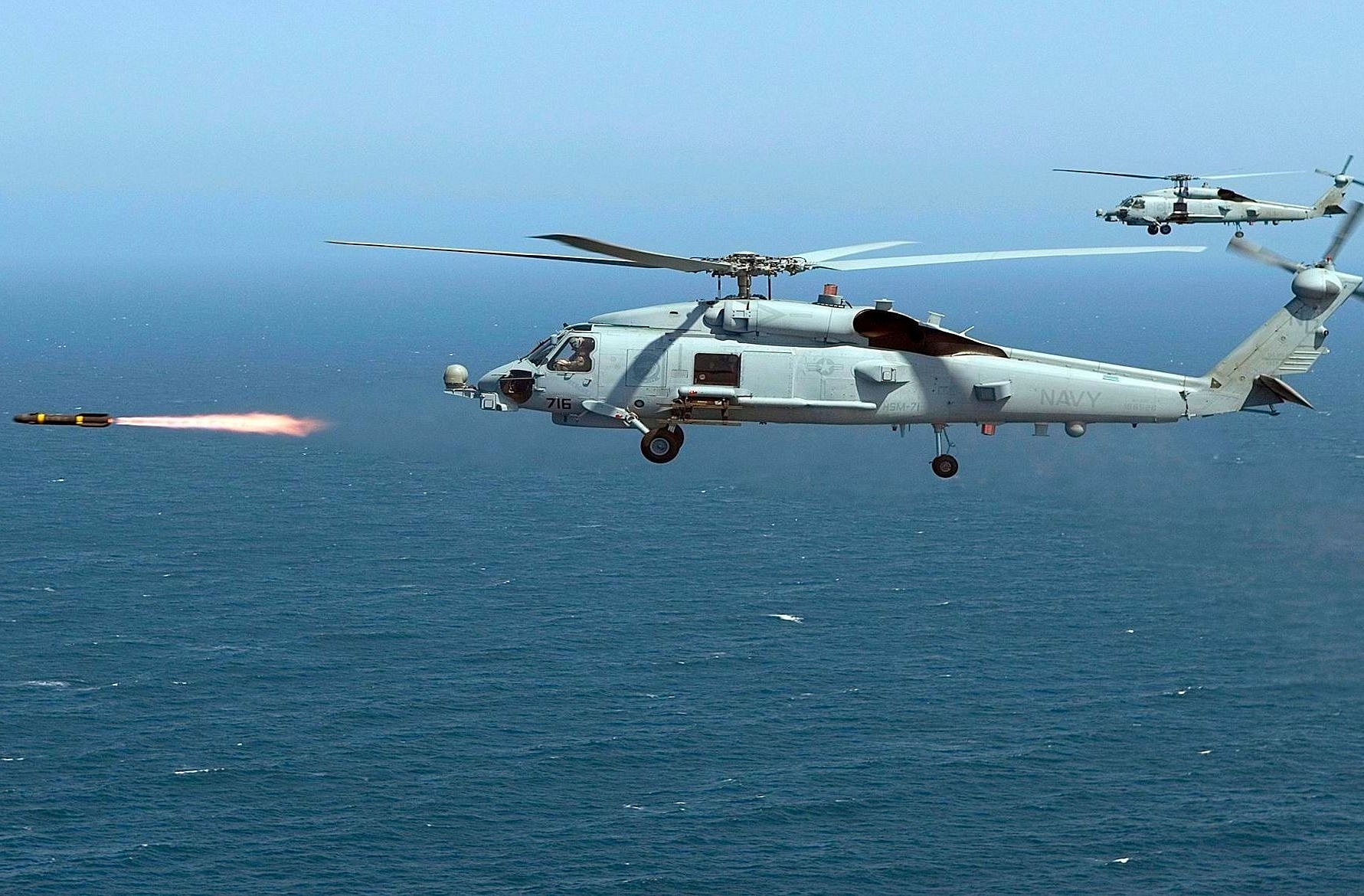Defence
India-US MH-60 Helicopter Deal: Why This Is A Critical Purchase And What Capabilities It Brings For The Navy
- Indian Navy’s long wait for new helos is over.
- Here’s what these helicopters will bring for the Indian Navy.

An MH-60R Seahawk of the US Navy firing a live Hellfire missile. (US Navy/Wikipedia)
The Indian Navy’s 14-year-long wait for new helos has come to an end today with India and the United States signing a $2.6 billion deal for 24 MH-60R Sea Hawk helicopters which will replace its obsolete Sea King anti-submarine helos.
The first Sea King helos landed on INS Vikrant, the first aircraft carrier of the Indian Navy, in July 1971, just months ahead of the Bangladesh liberation war. Navy contracted for an improved version – Mk42B Sea King – in 1982, and 20 of these were delivered to it between 1988 and 1992. Nearly five decades since the first Sea Kings landed, less than 10 of these whirly birds remain operational.
The shortage is so acute that some of the Navy’s warships go to sea without dedicated anti-submarine warfare (ASW) capability at a time when the presence of the People’s Liberation Army Navy in the Indian Ocean is growing.
These warships instead depend on the Chetaks, Hindustan Aeronautics Limited’s (HAL) licence-built version of the French Aérospatiale Alouette III light utility helicopter, which is even older than Sea Kings that the MR-60s will replace. Alouette IIIs were designed in the late 1950s and introduced in 1960.
Without dedicated ASW helicopters, Indian warships are virtually blind to and defenceless against enemy submarines.
In one such instance, the navy had to send four warships — INS Sahyadri and INS Satpura, guided missile stealth frigates, INS Shakti, a fleet tanker, and INS Kirch, a guided missile corvette — on a two-and-a-half-month long operational deployment to the PLAN dominated waters of South China Sea and the Pacific in 2016 with just one ASW capable Sea King 42B and two Chetak utility helicopters.
The criticality of AWS capability for the Indian Navy can be gauged from the fact that the service wants submarine-hunting capabilities not only on its future 123 medium multirole helicopters, but also on the 111 light utility helicopters (approved in 2017) which will replace the nearly 40 HAL Chetak/Allouette IIIs utility helos in service with the Indian Navy.
The Navy will get six of the 24 MH-60Rs contracted for today early next year and the remaining 18 will be delivered over two years.
The helos come with transformative capabilities.
One, the MH-60s come with Telephonics APS-153(V) radar, which, among other things, has high-resolution Inverse Synthetic Aperture Radar (ISAR) imaging option. Using ISAR, Telephonics says, the helo can classify detected moving ship targets under night and restricted visibility and operate from outside the enemy’s visual and lethal range.
The radar also comes with Automatic Radar Periscope Detection and Discrimination capability.
Submarines, when under water, raise periscopes above the water surface for safety sweeps, surveillance, and visual observation of targets, making themselves vulnerable to radar detection. Using this capability, the radar can spot and discriminate submarine periscopes. The detection of periscopes is difficult, especially in roughs seas, as the periscopes are small and are raised above the water surface for a very short time.
Two, the Indian Navy’s MH-60Rs will have AN/AQS-22 Airborne Low Frequency Sonar system as its primary undersea ASW sensor. According to Raytheon, this is the only in-service dipping sonar with multi-frequency operation, which helps it adapt its performance to varying environmental conditions.
Due to its rapid search rate and longer detection range, this system reduces the number of helicopters required to perform active ASW screening.
Three, these helicopters will come with the Advanced Precision Kill Weapon System (APKWS) laser-guided rocket, which BAE Systems has been pitching to the Indian forces for years.
APKWS, which the US Navy deploys on its MH-60 helos, helps in hitting targets with improved accuracy and minimal collateral damage. According to its maker, APKWS “redefines precision” and gives a “low-cost surgical strike capability”.
The same system, Livefist says, has been pitched as an ammunition upgrade for India’s AH-64E Apache, HAL Rudra and Light Combat Helicopter.
Four, apart from APKWS, the helos will also be equipped with AGM-114 Hellfire air-to-surface missiles, the Kongsberg Naval Strike Missile with proven sea-skimming capabilities for the anti-ship role and Raytheon MK54 torpedoes.
These helos (and the 123 medium naval multirole helicopters in pipeline) will operate off aircraft carrier INS Vikramaditya, three Shivalik-class stealth frigates (first stealth warships built in India), the follow-on P-17A (or Nilgiri-class) frigates, destroyers of Delhi-class, Kolkata-class and Visakhapatnam-class, and future aircraft carriers, including INS Vikrant.
For the Navy, this deal could not have come a day later.
Introducing ElectionsHQ + 50 Ground Reports Project
The 2024 elections might seem easy to guess, but there are some important questions that shouldn't be missed.
Do freebies still sway voters? Do people prioritise infrastructure when voting? How will Punjab vote?
The answers to these questions provide great insights into where we, as a country, are headed in the years to come.
Swarajya is starting a project with an aim to do 50 solid ground stories and a smart commentary service on WhatsApp, a one-of-a-kind. We'd love your support during this election season.
Click below to contribute.
Latest